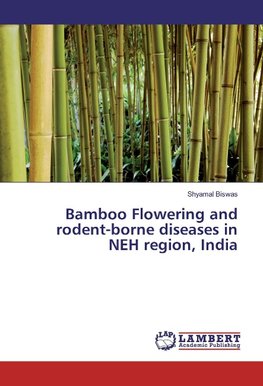
-
 Anglický jazyk
Anglický jazyk
Bamboo Flowering and rodent-borne diseases in NEH region, India
Autor: Shyamal Biswas
Bamboo is a versatile Non-Timber Forest Products (NTFPs). Out of 125 bamboo sp. available in India, 8.4 taxa are found in NEH region. Mizoram occupies the largest forest area (30.8%) under different bamboo species, followed by Meghalaya with 26.0%. Bamboo... Viac o knihe
Na objednávku, dodanie 2-4 týždne
22.14 €
bežná cena: 24.60 €
O knihe
Bamboo is a versatile Non-Timber Forest Products (NTFPs). Out of 125 bamboo sp. available in India, 8.4 taxa are found in NEH region. Mizoram occupies the largest forest area (30.8%) under different bamboo species, followed by Meghalaya with 26.0%. Bamboo is the natural resource and account for 12.8% approximately of the total forest cover in India particularly in the North-Eastern States of the Country. The gregarious bamboo flowering occurs periodically after every 48±1 years and causes ecological imbalance. Bamboo plants die after flowering and fruiting, leaving bare and exposed soil, which is disastrous in mountainous states. Rodents feed on the flowers and seeds of the dying bamboo, leading to a rapid growth in their numbers, which migrate toward agricultural fields, granaries and destroy standing crops and stored grains. The destruction of crops results in food scarcity and famine. The epidemiological imbalance leads to increased risk of infection in man and animals or outbreak of rodent-borne diseases. Rodent, flea and other ecto-parasites control is a long-term measure to combat rodent-borne diseases.
- Vydavateľstvo: LAP LAMBERT Academic Publishing
- Rok vydania: 2017
- Formát: Paperback
- Rozmer: 220 x 150 mm
- Jazyk: Anglický jazyk
- ISBN: 9783330070035












